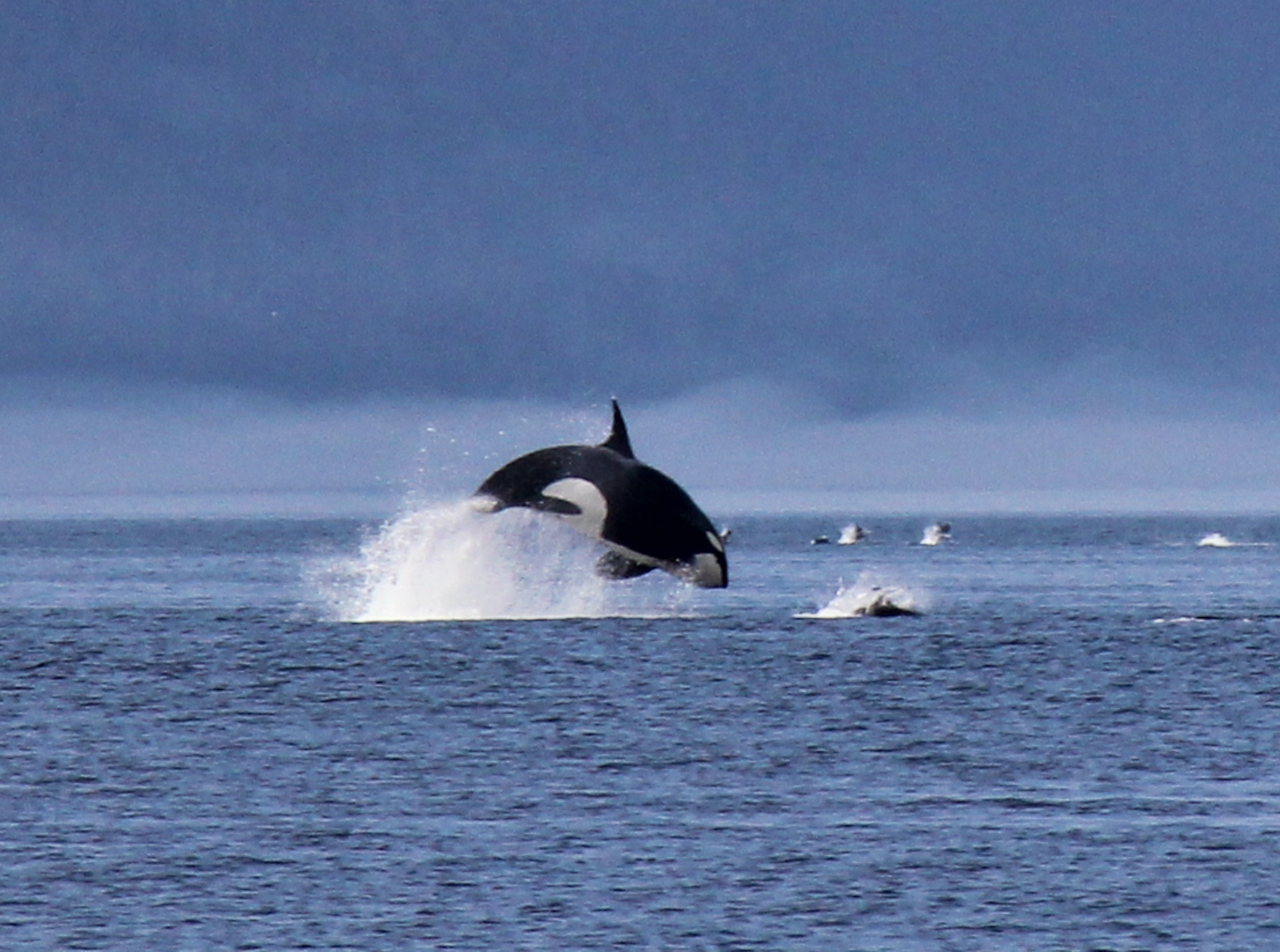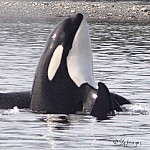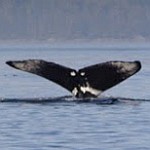Harbour Porpoise
Harbour porpoise are slow swimmers and do not usually make splashes when surfacing. When chased by Orca, they swim faster up to 23 km/h. When a Harbour porpoise surfaces, its blows can be heard as a quick, puffing sound. The triangular dorsal fin can be seen as the porpoise rolls forward and dives again. A Harbour porpoise can remain underwater normally for about 2-3 minutes but dives may be up to 5 minutes long. Harbour porpoise rarely approach boats and rarely display other activities at the surface, such as bow-riding.
A pod of Harbour porpoise off Whytecliff Park, West Vancouver, B.C. in April 2017. The pod may have had up to 50 animals. Observe how they surface quickly and dive again.
Dall’s Porpoise
Dall’s porpoise can swim fast, reaching speeds up to 30 knots (56 km/h). They tend to dart back and forth when travelling fast, and at high speeds, Dall’s porpoise make a splash called a “rooster tail” formed by water coming off their heads as they come to the surface. They surface regularly with intervals as short as 5 seconds and their blows are quiet. When they are foraging, a Dall’s porpoise may dive for longer periods up to 5 minutes long. Dall’s porpoise often are found bow-riding in front of boats but they rarely leap (breach) out of the water.
Pacific White-Sided Dolphin
Pacific White-Sided dolphins can travel quickly reaching speeds of up to 25 knots (almost 47 km/h). They are very acrobatic, displaying a variety of airborne flips and leaps that can reach extreme heights. Pacific White-Sided dolphins are often found bow riding and wake-riding along small and large vessels. Occasionally, they may smack the water with their head or tail when feeding.
Minke Whale
Minke whales are difficult to spot because they do not stay near the surface for long and they can travel great distances before surfacing again. The spouts of Minke whales are difficult to observe as they are low; however, their breaths can be heard indicating their presence in an area. Minke whales take one to three quick breaths before submerging again. When submerging or diving, the blowholes are followed quickly by the dorsal fin as the whale rolls forward. Their dives can be 10 minutes or longer. Minke whales seldom breach or leap from the water. Occasionally, they may be seen lunge feeding at the surface. Minke whales normally swim at speeds between 10 km/h to 15 km/h, and swim up to 55 km/h when chased by Transient Biggs (meat eating) Orca.
Two Minke whales surfacing off Alert Bay, B.C., in August 2012. Note how quickly they breathe and dive – if you were looking in the wrong direction, you would have missed them!
Gray Whale (Grey Whale)
The blow of Gray whales can be low and bushy. When observing a gray whale from the front or from behind, the blow can be described as V-shaped frequently forming a heart shape due to the exhalation through two blowholes. Some Gray whales have blows that are tall. Gray whales travel slowly and are known to spyhop occasionally. They approach vessels, allowing for interactions with boaters.
Humpback Whale
The blow of Humpback whales are bushy and tall (up to 3 meters). Humpback whales are slow swimmers and they display a variety of surface activities, which scientists believe are forms of communication and/or play. They are known for their full body breaches or leaps out of the water. Humpback whales also slap their tails, their flippers, and even their head onto the surface of the water. When they are annoyed such as being surrounded by many dolphins, they may force air through their blowholes to produce a loud sound (called “trumpeting”). When diving deep or for a longer period of time, a Humpback whale arches its back and raises its tail into the air. Dives may be up to 30 minutes long.
Orca or Killer Whale
The blows of Orca can be easily heard and seen as they can be up to 1.5 meters tall. Orca normally swim about 10 km/h but they can swim up to 50 km/h when chasing prey. Orca display a variety of activities, including spyhopping, tail-slapping, flipper-slapping, porpoising, and breaching. It has been estimated that a full body breach requires an Orca to attain a speed of 35 km/h. Orca surface regularly and they do approach boats but they rarely bow-ride along them.



